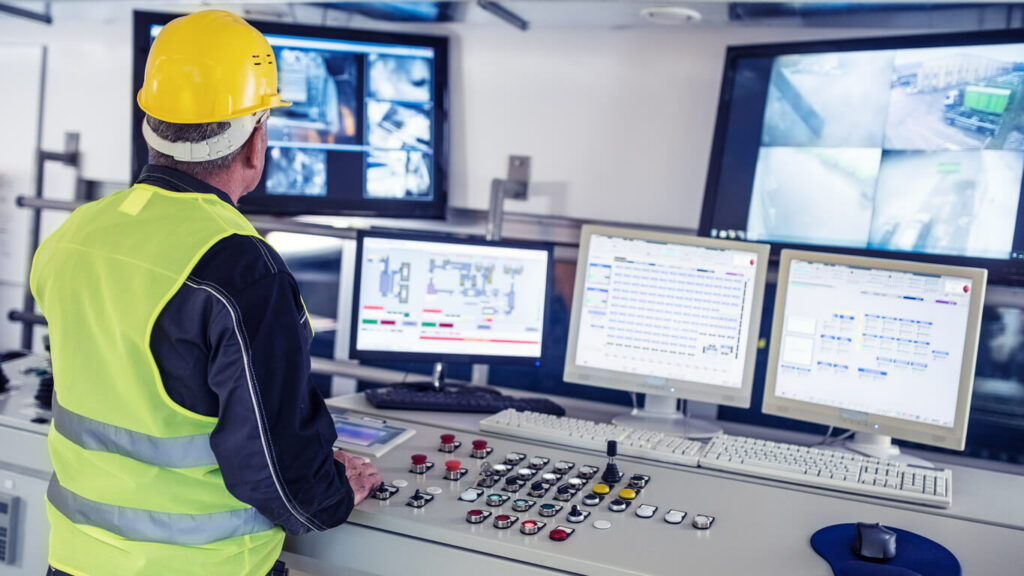The food industry is undergoing a transformative shift from manual labour to automation technologies. Demand for great food in our growing population outweighs the availability of labour to meet such demand, and companies continue to struggle to hire and maintain workforces to produce their products. This has resulted in food processing companies to consider upgrading facilities and processes to become more automated, well beyond the automated controls of the past three decades.
Automated Food Processing Benefits

Automation in food processing can include a wide range of robotics and other autonomous systems that perform a range of different tasks with minimal human intervention, including:
- Sorting
- Cutting
- Cooking
- Assembling
- Packaging
- And more
Automation brings a number of important benefits including:
- Dramatically increased processing speeds, precision, and consistency.
- Removing some of the risks that are inherently part of the human workforce, such as human error, repetitive strain injuries, and even infectious illnesses.
While some fear that automation will eliminate industry jobs, the current labour shortage in Canada demonstrates that many people have a choice of their employment, and the industrial processes for putting food on the table are not always their first choice.
Current Automations in Food Processing
Food Packaging Automation

For many food processors, one of the most targeted areas of automation adoption is in the packaging room. While we have seen packaging with robotics for the past several decades, robotics and automation are now much more prevalent. There are many more automated baggers, cartoners, flow wrapping machines, and tray sealing machines available. Additional systems can often measure or weigh on the fly, seal the product inside packaging, check for foreign materials, and add labels and other requirements for the finished product. Other robots can take the finished products and pack them into cases, which are then palletized and wrapped by other robots. Not only can packaging be done more rapidly in this way, but the automation can also reduce product waste by not dropping or mishandling products and by packing the products in a more consistent and stable way on pallets so that they arrive at the customer’s location safely.
Machine Vision Automation

Machine vision technology has been used for decades and is becoming more sophisticated every year. By using cameras and other sensors, automated equipment can take visual imprints and compare the images to source data – some might say “learning differences between items”. For example, machine vision can pick and pack doughnuts or cupcakes of several types into a single tray variety pack.
Machine vision is also being used for quality control directly on the production line, with the ability to make small adjustments to the machine’s settings, or automatically detect and remove products that do not meet quality standards. Many of these systems can accurately categorize and react to thousands of products a minute — much faster and safer than humans.
Material Handling Automation

Conveyor and material handling systems continue to see incredible automation changes. On the farming side, automated systems enable the growing and harvesting of vegetables inside large temperature-controlled facilities — no longer reliant on the natural growing seasons.
In food factories, automated systems ensure seamless transportation of ingredients, products, and packaging materials throughout the production line. Then, later, these systems can pick and pack the delivery truck. All of these automations allow companies to optimize efficiency, to reduce manual handling, and to streamline workflows. In many cases they achieve a form of sustainability as an inherent bonus, such as reduced water consumption.
Real-Time Data Automation

Automation systems generate real-time data and analytics for both continuous improvement and proactive identification of potential issues. More fully-automated processes can even adjust processing speeds of equipment to accommodate changes in production run sizes without having to adjust the line manually, allowing for greater flexibility and faster response times.
This increased data can identify bottlenecks and potentially failing production equipment. From a food safety perspective, increased data also allows for improved traceability and inventory control, resulting in potentially fewer recalls.
As companies work towards becoming less labour reliant and more technologically competitive on a global scale, automation is the answer. The value equation is a trade-off: capital costs to incorporate automation can be prohibitive, but not being able to produce due to labour shortages is arguably even more costly.
Analysis of which aspects of a food process are best suited to automation, and which has the greatest return on investment, will help to create a prudent plan for investment to offset risks and increase throughput.
As automation continues to expand its role in food processing, consumers can expect consistent products at scale as well as a more reliable and stable food system overall.
If you are planning automation changes for your food process, reach out to the team at IFAB and let’s see how we can help make this happen.